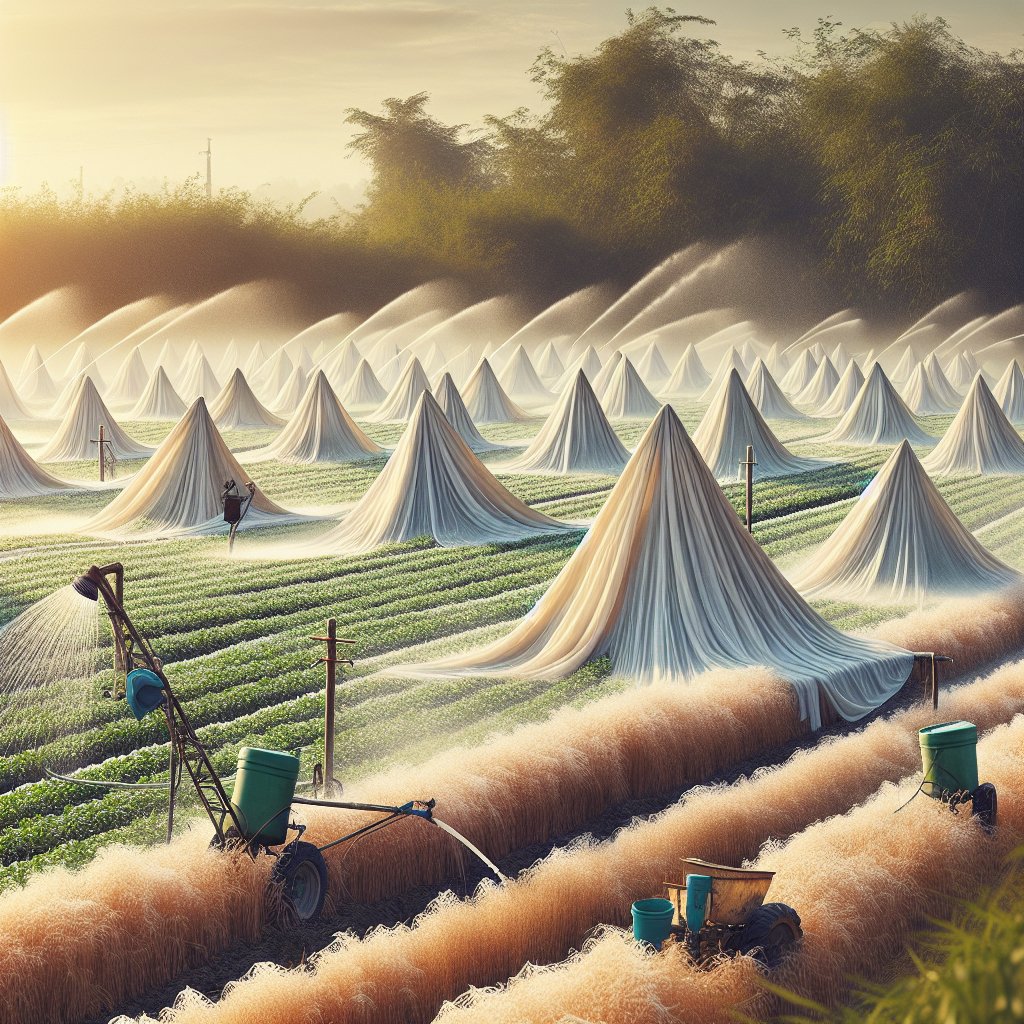
Frost damage is a significant concern for farmers and gardeners alike, as it can lead to substantial losses in crop yield and quality. Understanding how to protect crops from frost damage with simple techniques is essential for ensuring a successful harvest. This article explores various methods that can be employed to safeguard crops against the detrimental effects of frost, focusing on both traditional and innovative approaches.
Understanding Frost and Its Impact on Crops
Frost occurs when the temperature drops to a point where the moisture in the air condenses and freezes on surfaces, including plants. This can happen during clear, calm nights when the heat from the ground radiates into the atmosphere, causing temperatures to fall below the freezing point. Frost can be particularly damaging to crops because it can cause the water inside plant cells to freeze, leading to cell rupture and plant tissue damage.
The impact of frost on crops varies depending on several factors, including the type of crop, its growth stage, and the severity and duration of the frost event. For instance, young seedlings and flowering plants are more susceptible to frost damage than mature plants. Additionally, some crops, such as citrus fruits and certain vegetables, are more sensitive to frost than others, like root vegetables and grains.
Simple Techniques to Protect Crops from Frost
Site Selection and Crop Planning
One of the most effective ways to protect crops from frost is through careful site selection and crop planning. Choosing a location with good air drainage can help minimize frost risk, as cold air tends to settle in low-lying areas. Planting on slopes or elevated areas can reduce the likelihood of frost damage. Additionally, selecting frost-resistant crop varieties and timing planting to avoid frost-prone periods can significantly mitigate the risk.
Mulching
Mulching is a simple yet effective technique for protecting crops from frost. By covering the soil with organic materials such as straw, leaves, or wood chips, mulch acts as an insulating layer that helps retain soil warmth and prevent rapid temperature fluctuations. This can protect plant roots and lower stems from freezing temperatures. Mulching also offers additional benefits, such as moisture retention and weed suppression.
Row Covers and Tunnels
Using row covers and tunnels is another practical method for frost protection. These structures create a microclimate around the plants, trapping heat and reducing exposure to cold air. Row covers can be made from various materials, including fabric, plastic, or even old blankets. Low tunnels, constructed with hoops and plastic sheeting, provide a more robust solution, offering protection from both frost and wind.
Watering and Irrigation
Watering crops before a frost event can help protect them from damage. Moist soil retains heat better than dry soil, providing a buffer against freezing temperatures. Additionally, some farmers use overhead irrigation systems to apply a fine mist of water during frost events. As the water freezes, it releases latent heat, which can help maintain the temperature around the plants above the critical threshold for frost damage.
Wind Machines and Heaters
For larger-scale operations, wind machines and heaters can be employed to protect crops from frost. Wind machines work by mixing warmer air from above with the colder air near the ground, raising the temperature around the plants. Heaters, such as propane or oil-fired units, can be strategically placed throughout the field to provide localized warmth. While these methods can be effective, they are also more resource-intensive and may not be suitable for all growers.
Conclusion
Protecting crops from frost damage is a critical aspect of successful farming and gardening. By employing simple techniques such as site selection, mulching, row covers, and strategic watering, growers can significantly reduce the risk of frost damage and ensure a healthy, productive harvest. While more advanced methods like wind machines and heaters are available, they may not be necessary for all situations. Ultimately, understanding the specific needs of your crops and the local climate will guide you in choosing the most appropriate frost protection strategies.

